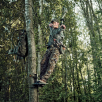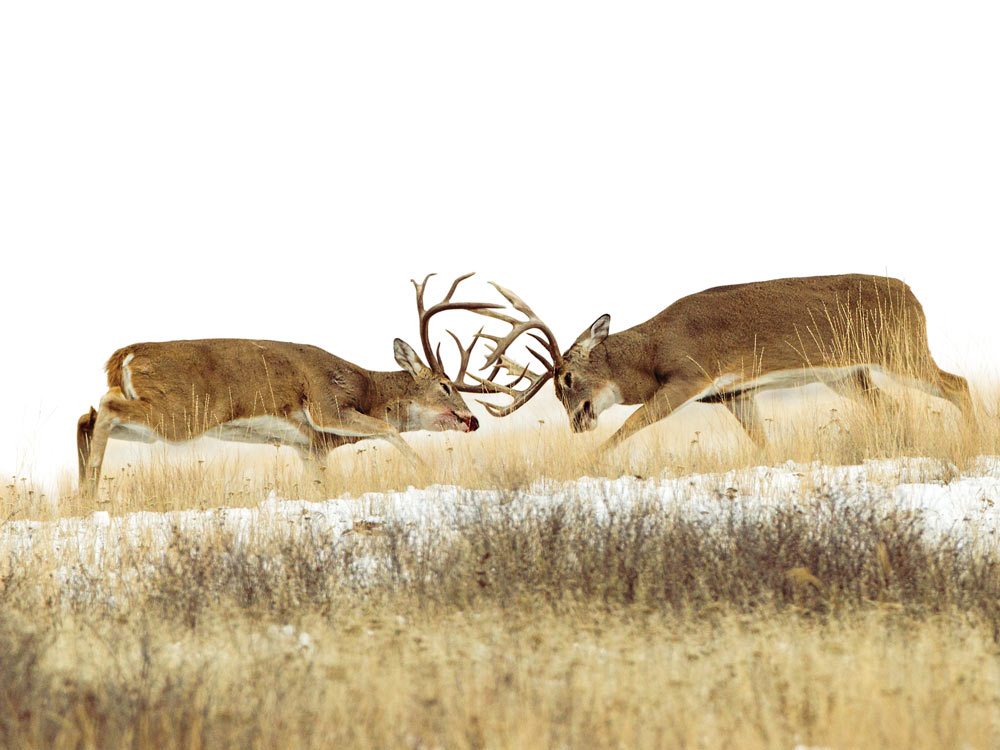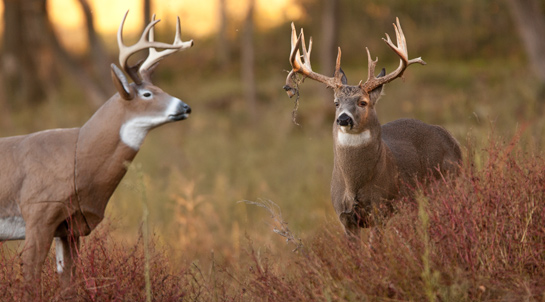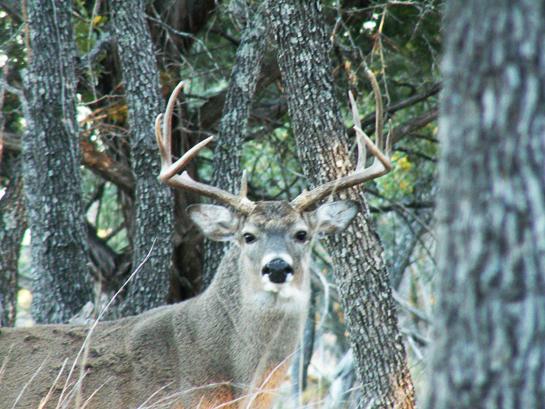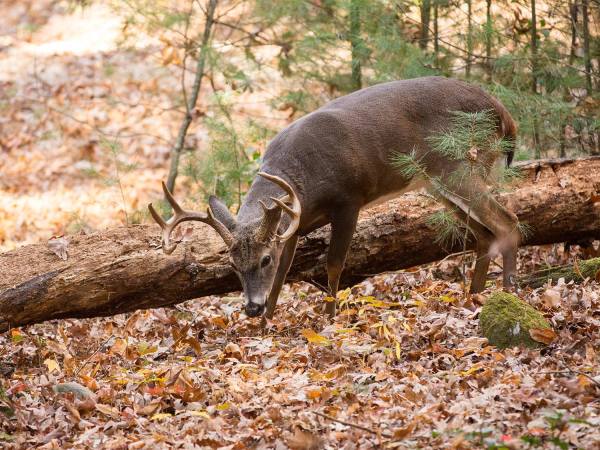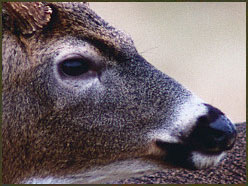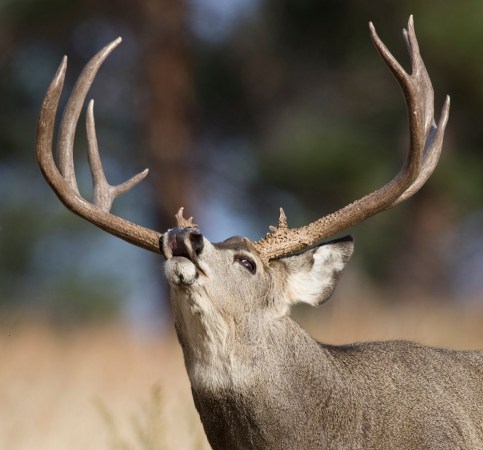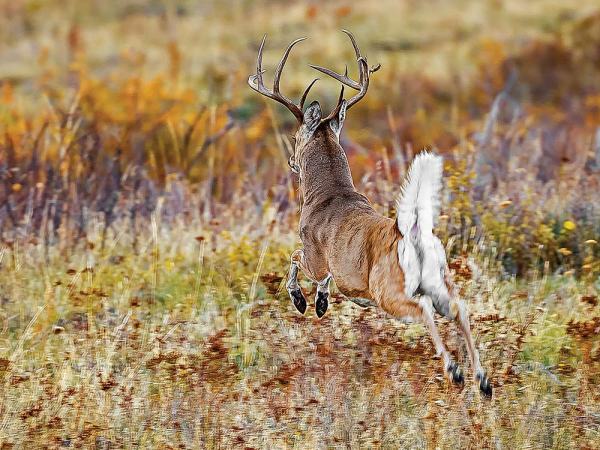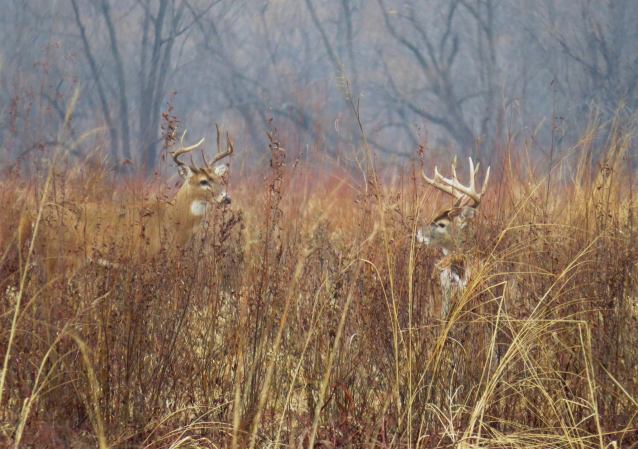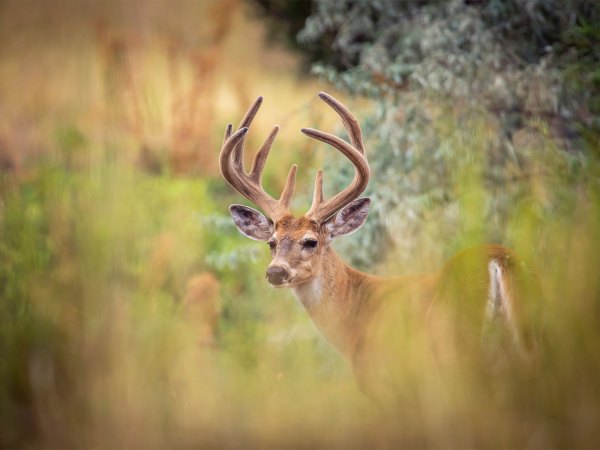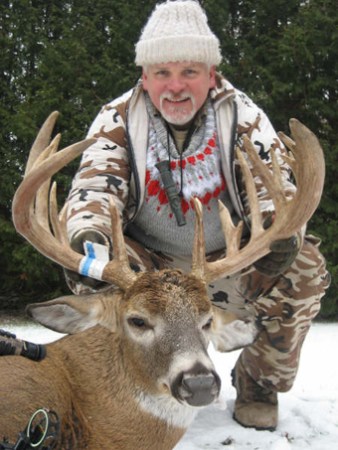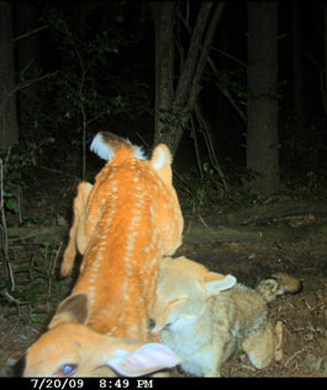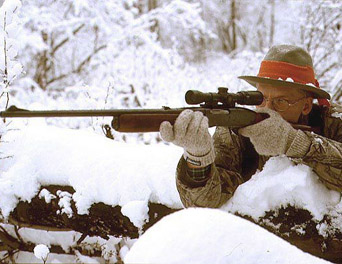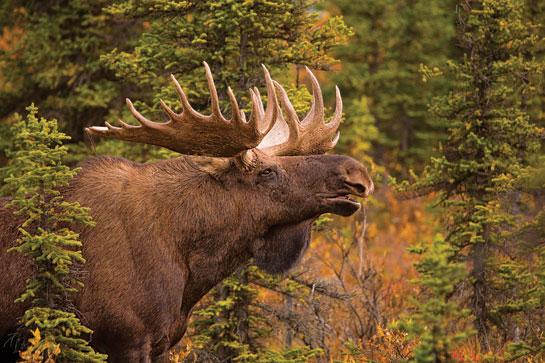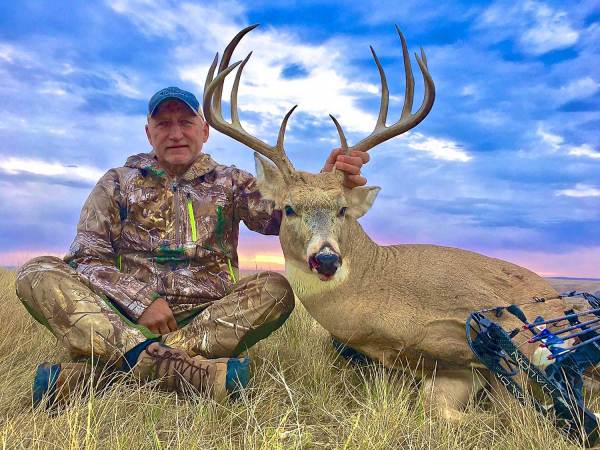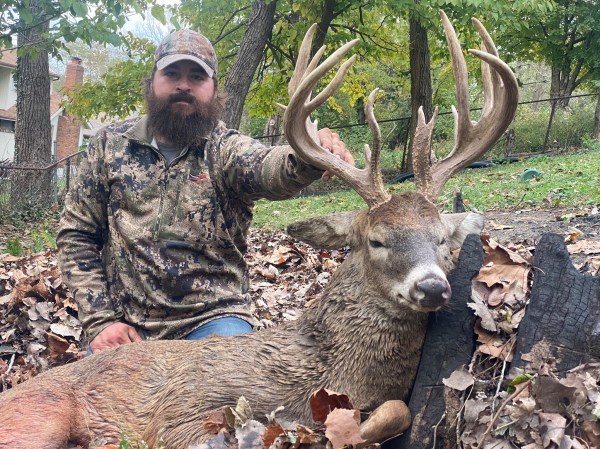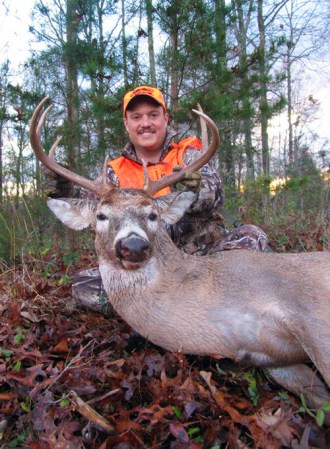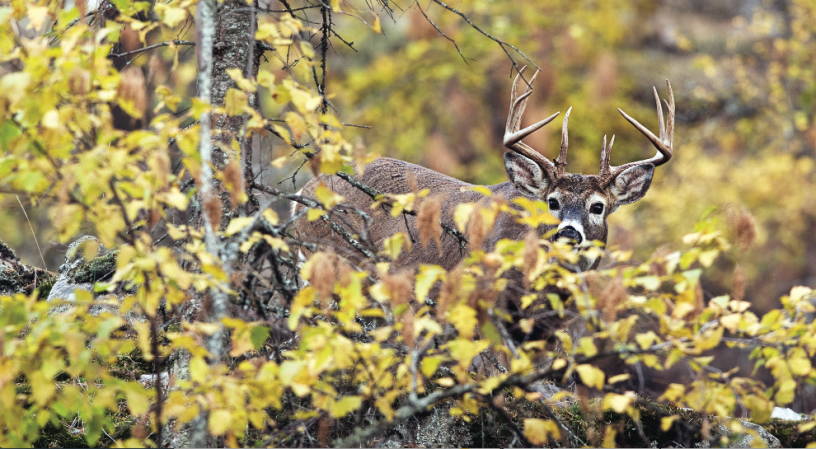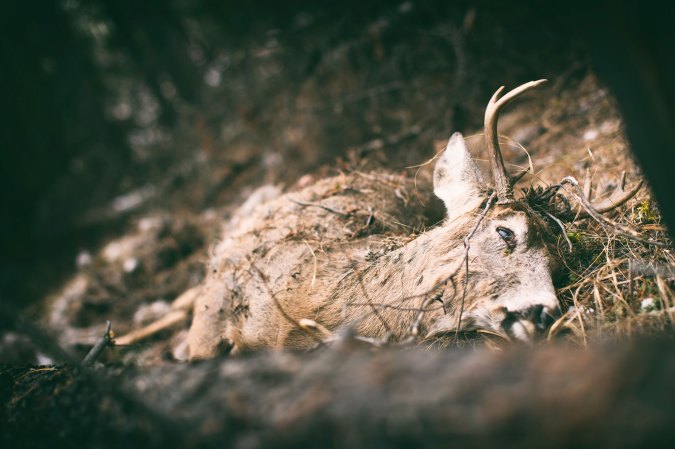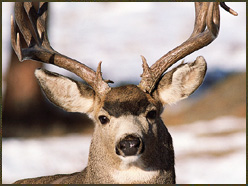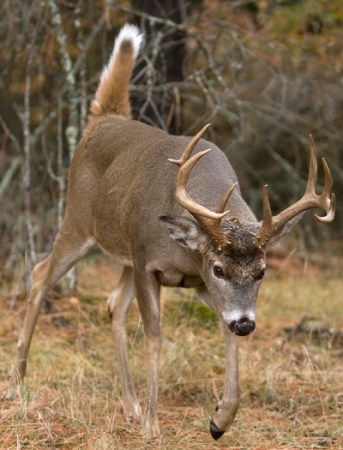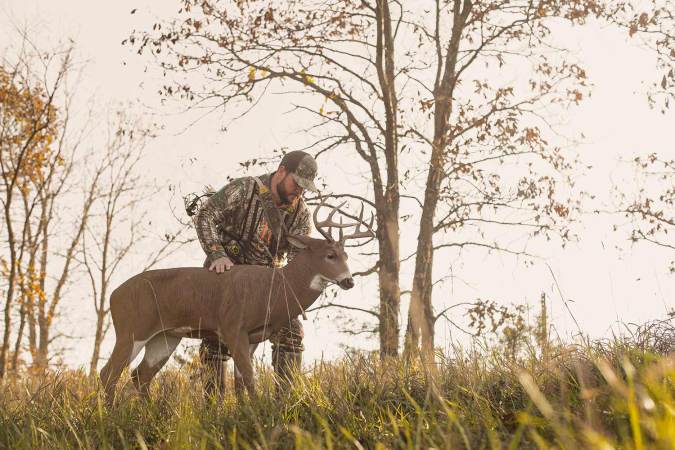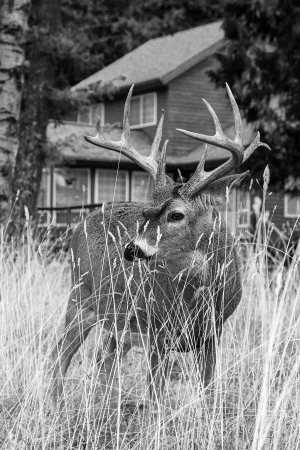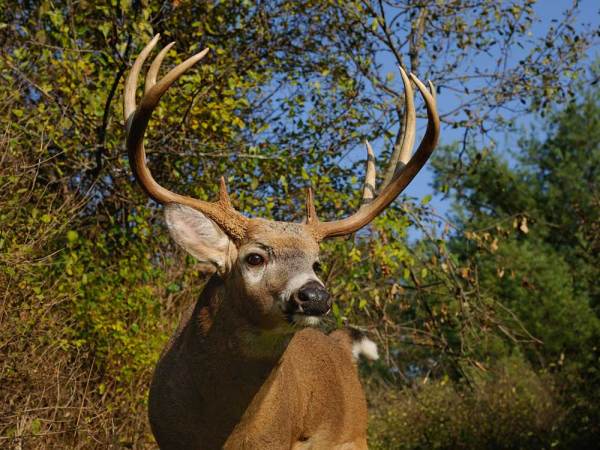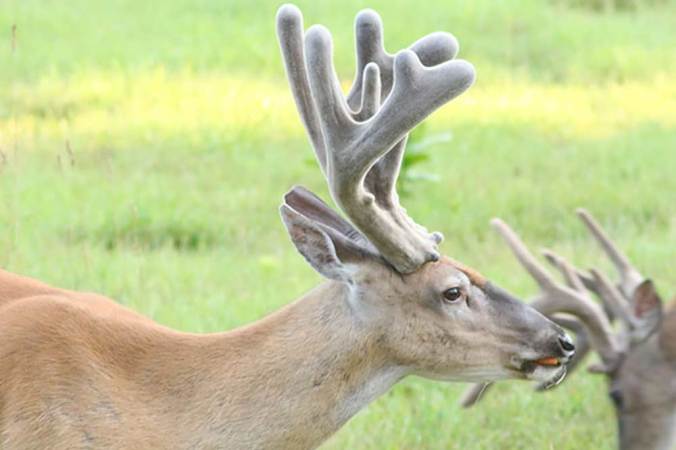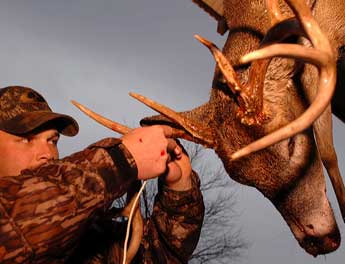Deer hunting is mostly a passive pursuit. We position ourselves in a location where scouting and intuition tell us deer will pass. And we wait. Come November, however, active participation can pay off. Bucks are much more aggressive now that the rut is in full swing. Your tactics should match. Calling and rattling can be very effective. How do you know when to use them? Read on.
Scenario 1: Eyes on the Prize
It’s midmorning and the tall-tined buck you have multiple trail cam images of is in sight. He’s just stepped out of the timber 250 yards away and is working his way along the edge of a cut cornfield, moving with a steady, deliberate pace, his nose to the ground.
- What It Means: That buck is likely on the prowl for a hot doe.
- Plan of Action: Grab your rattling antlers. He’s still a bit too far for a grunt tube. Hit the antlers together with medium intensity. Keep the sequence short—just a couple of cracks—and watch the buck’s reaction. If he hears it, he’ll likely stop and stare in your direction. Do nothing. Wait for the buck to make his move. If he turns and starts in your direction, grab your bow and get ready.
If the buck continues on his original path, hit the antlers together again and repeat the process, louder each time.
Scenario 2: Stir Things Up
The sun cleared the horizon an hour ago. It’s cold and clear, but you haven’t seen a buck yet.
- What It Means: Bucks are likely on their feet, as the conditions are just right to get them moving to feed and breed. You just haven’t seen one yet.
- Plan of Action: Initiate a calling sequence using a grunt tube. Start with a few soft grunts, and mix in some doe bleats using a can-style call. Wait five minutes and repeat the grunts, but increase the volume and intensity. When you’re calling blind like this, it’s imperative that you stay alert and don’t start off calling too loudly. There might be a buck at close range that you just haven’t spotted.
Scenario 3: All Locked Up
You’ve devoted a full day to the woods. It’s nearly lunchtime, and your patience has just been rewarded. A target buck is pushing a doe around on a nearby ridge.
- What It Means: It’s obvious by the doe’s reluctance to leave the buck that she’s in heat.
- Plan of Action: Calling a buck away from a hot doe isn’t impossible, but it’s sure not easy. Employ your grunt tube and issue some aggressive challenge grunts and roars. The goal is to make that buck think he has a rival. But use the call sparingly. Often, estrous does will steer clear of other deer—especially bucks—once they’ve found a suitor. Push that doe away, and the buck will leave with her.
Gauge the buck’s response to your calling by reading his body language. If the buck appears to be agitated, continue to call from time to time. If the buck seems not to care, put the call away. Your best chance now is to wait and hope that doe pulls him past you.
Read Next: Deer Hunting: Ultra Aggressive Tactics for the Rut
DIY Rattle Bag
I don’t like to carry big, bulky antlers. Instead, I tend to rely on small rattling devices that can more easily fit in a pack. You can buy rattle bags, but here’s how to make your own:
STEP 1:
Find an old boot-length sock made of fairly heavy fabric.
STEP 2:
Purchase hardwood dowels at a craft or hardware store. You want a dozen dowels of varying diameters, but all larger than ½ inch.
STEP 3:
Cut each dowel into 8-inch lengths. You can use 6-inch dowels if you want a more compact bag, but the longer dowels will make louder sounds.
STEP 4:
Place the dowels in the sock and use a zip tie to close the open end.
STEP 5:
Start rattling by smacking the dowels together against the palm of your hand, and then grind the dowels by rolling them between both hands.
